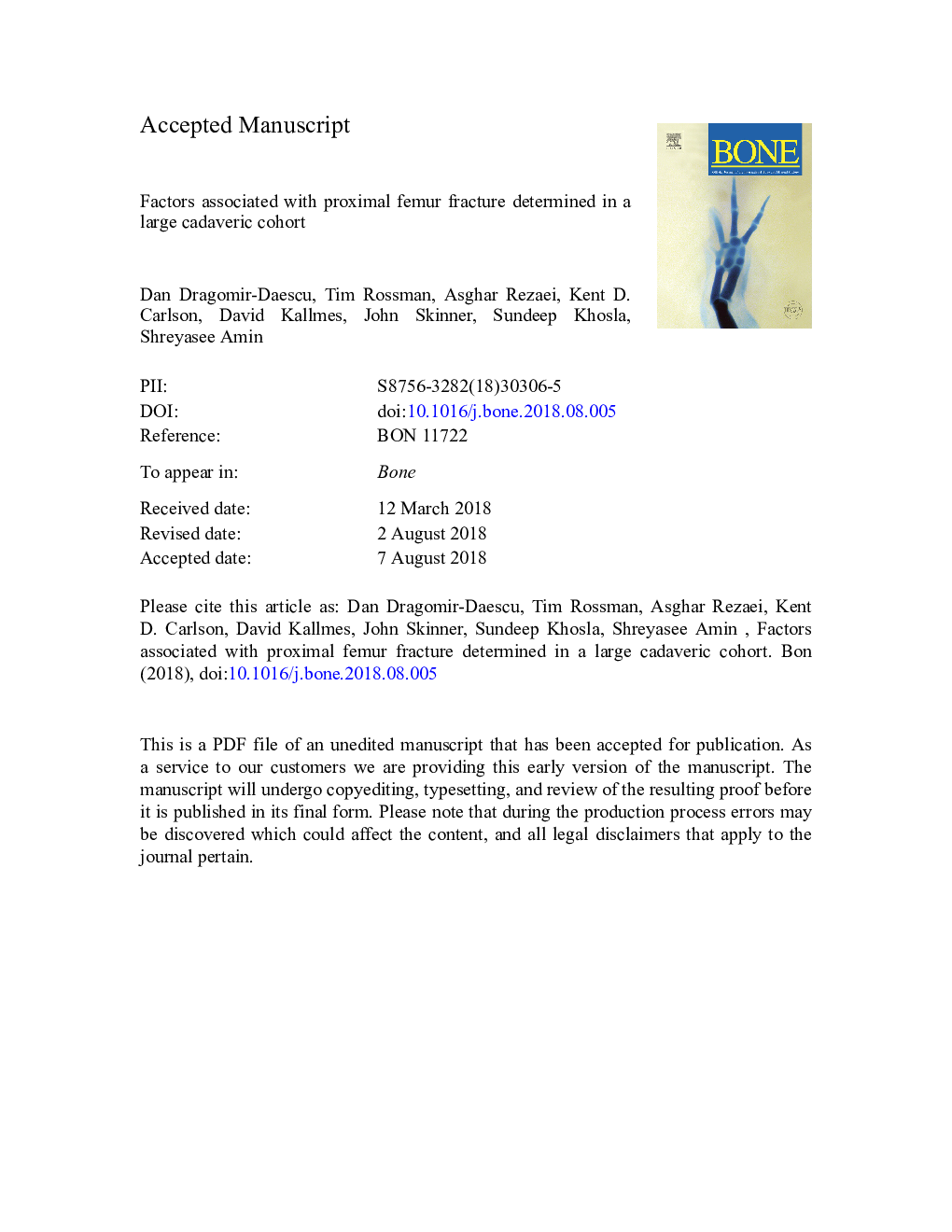| Article ID | Journal | Published Year | Pages | File Type |
|---|---|---|---|---|
| 8624762 | Bone | 2018 | 27 Pages |
Abstract
Five explanatory variables were statistically significant in explaining the variability in femoral strength: aBMD, sex, age, fall speed, and neck-shaft angle (Pâ¯â¤â¯0.0135). These five variables, including significant interactions, explained 80% of the variability in hip fracture strength. Additionally, when only aBMD, sex, and age (Pâ¯<â¯0.0001) were considered in the model, again including significant interactions, these three variables alone explained 79% of the variability in hip fracture strength. So while fall speed (Pâ¯=â¯0.0135) and neck-shaft angle (Pâ¯=â¯0.0041) were statistically significant, the inclusion of these variables did not appreciably improve the prediction of hip fracture strength compared to the model that considered only aBMD, sex and age. For the variables we included in this study, in the ranges we considered, our findings indicate that the clinically-available information of patient age, sex and aBMD are sufficient for femoral strength assessment. These findings also suggest that there is little value in the extra effort required to characterize the effect of femoral geometry on strength, or to account for the probabilistic nature of fall-related factors such as fall speed and angle of impact. For fracture type, the only explanatory variable found to be significant was aBMD (Pâ¯â¤â¯0.0099). We found that the odds of having intertrochanteric fractures increased by 47% when aBMD decreased by one standard deviation (0.2â¯g/cm2).
Related Topics
Life Sciences
Biochemistry, Genetics and Molecular Biology
Developmental Biology
Authors
Dan Dragomir-Daescu, Timothy L. Rossman, Asghar Rezaei, Kent D. Carlson, David F. Kallmes, John A. Skinner, Sundeep Khosla, Shreyasee Amin,
